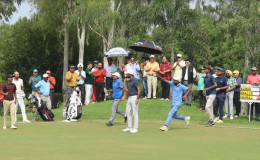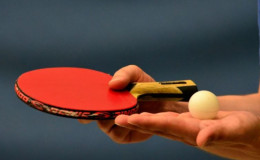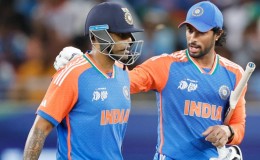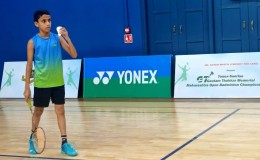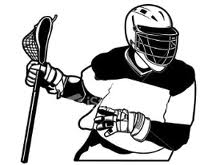
Two teams of ten players try to get the ball into the opponent’s goal by carrying, throwing, or batting it with the Crosse (the stick with a net on the end).
There are four periods of 20-25 minutes each. At the end of each quarter, the teams change ends. There are intervals of two, ten, and three minutes between the quarters.
Each goal scores one point. The winning team is the team with the most goals.
Pitch:-
The pitch is rectangular, 100.58 metres (110 yards) long, 54.86 metres (60 yards) wide, with lines marked in white.
Soft flexible cones are placed at each corner, at each end of the substitution gate (the two points either side of the centre line), and by the bench area directly opposite.
Goal Post:-
The posts are 1.83 metres (6 feet) apart, and the crossbar is the same height from the ground.
The net extends to 13.72 metres (15 yards) back at the furthest point of the pyramid shape.
Equipments:-
All players wear protective gloves and a helmet with a chinstrap and face mask.
Jerseys are the same colour for the whole team, and have numbers of the players on the back.
Sticks (Crosse):
The sticks are between 101.6 and 182.8 centimetres (40 to 71 inches) long, and between 10.1 and 25.4 centimetres (4 to 10 inches) wide at the head (the end with the net).
There are only four long crosses allowed per team at any one time, not including the goalkeeper''s Crosse, which may be up to 38.1 centimetres (15 inches) wide, and any length.
Ball:
This is made of white, yellow, black, or orange India rubber, 19.69 to 20.32 centimetres (7.75 to 8 inches) in circumference, and 142 to 149 grams (5 to 5.25 ounces) in weight
Should bounce between 1.1 and 1.3 metres (44 to 51 inches) when dropped onto concrete
Positions:-
Attack men: The attack men (in general) are the team''s goal scorers.
Middie: Middies are the heart of a good lacrosse team. They are constantly running, and therefore have to substitute more often. From taking face-offs, to scoring goals, to playing defence, mid-fielders
Defence:
Defence-men play with longer shafts (usually 60 inches), so they can beat on the opposing team easier.
Goalie: The goalie, much like every other sport, the goalie is the single most important of the lacrosse positions on the field.
Scoring:-
A goal is scored when the ball completely crosses the goal line.
It can be scored by a defender, and will count for the opposing team.
A goal can be scored by being kicked into the goal.
Out of play:-
The ball is out of play if it, or the player in possession of it, crosses a boundary line
Possession is awarded to the player of either side nearest the ball when it went out.
The game is restarted with a free play
All other players must be at least 2.74 metres (9 feet) from the player taking the free play.
Goal crease:
The goal crease is the circle surrounding each goal area. It has a radius of 2.74 metres (9 feet).
No attacking player is allowed in the goal crease at any time. If he touches the crease with any part of the body, his side loses possession.
Any defending player, including the goalkeeper, can only remain in the crease with the ball for up to four seconds. No defending player can enter the crease with the ball.
Fouls and misconduct:-
Charge an opponent in a reckless or dangerous manner.
Hold or trip an opponent.
Interfere with an opponent''s stick (unless it is a legal check).
Obstruct an opponent (except by a legal body check or hold)
Throw the stick.
Wave or hold the stick in front of an opponent.
Penalties:-
Time penalties are awarded for fouls. For technical (minor) fouls, the ball is either given to the opposing team, or the offending player is suspended for 30 seconds.
For personal fouls, players are suspended for 1 to 3 minutes. For expulsion fouls, serious offences, players may be suspended for the remainder of the game.
Players and officials:-
One head referee, two additional referees, a chief bench official, a timekeeper, two penalty timekeepers for each team, and a scorer for each team.
Each team will have a goalkeeper, and three players each in attack, midfield, and defence. There may also be up to 13 substitutes.
Types of play:-
Field lacrosse: Men''s field lacrosse is played with ten players on each team: a goalkeeper; three defenders in the defensive end; three midfielders (often called "middies") free to roam the whole field; and three attackers attempting to score goals in the offensive end. It is the most common version of men''s lacrosse played internationally.
Box lacrosse: Box lacrosse is an indoor version of the game played by teams of six on a hockey rink where the ice has been removed or covered by artificial turf. The enclosed playing area is called a box, in contrast to the open playing field of the traditional game
Women''s lacrosse: Women''s lacrosse does not promote physical contact primarily because the only protective equipment worn for this sport is a mouth guard and face guard and sometimes thin gloves
Governing Bodies:-
International Lacrosse Federation (ILF)
International Federation of Women''s Lacrosse Associations (IFWLA)
Federation Internationale d''Intercrosse



